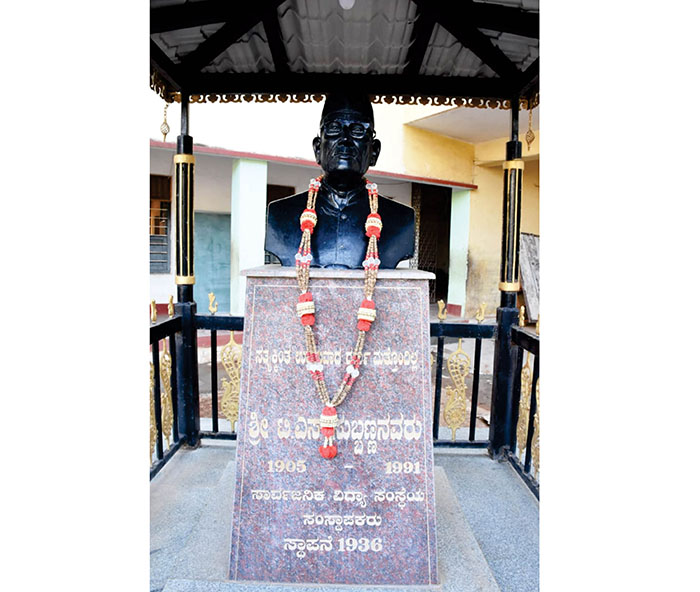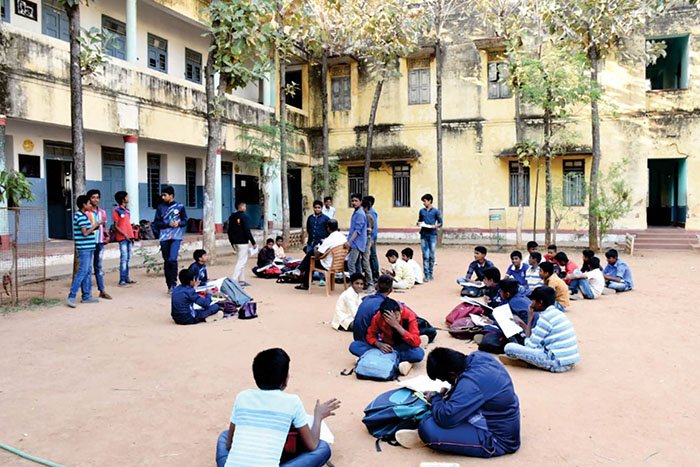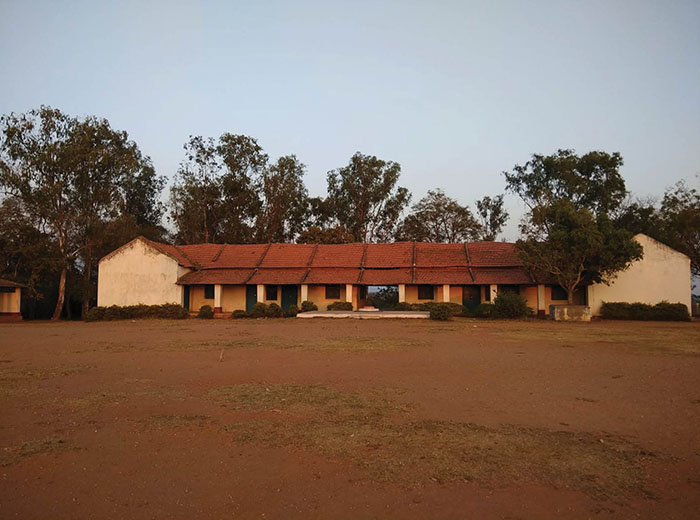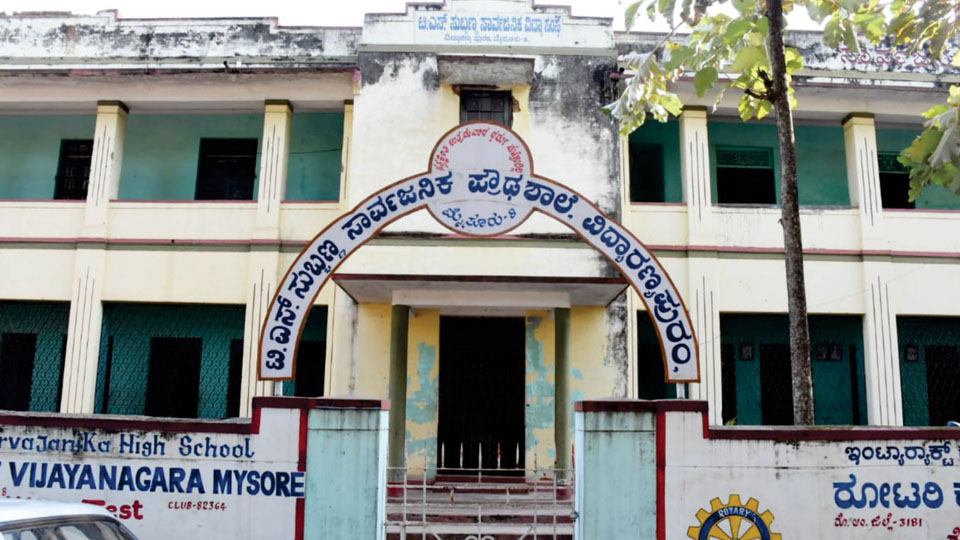By Dr. Bhagirath S. Naganath
[Continued from yesterday]
Many of the students were from rural parts of Mysore. Subbanna realised that many of them would go back to their native villages after their schooling. With this in mind, he began to coach them in irrigation, harvesting and animal husbandry. Fortunately, around this time the Government began to allocate land to senior freedom fighters. Subbanna received about 10 acres of land near Nanjangud. He at once utilised this piece of land to train his students in cultivation. Sundays were mainly kept aside for these activities.
Subbanna also taught students to milk cows and make butter and ghee from this. This patch of land came to be known as ‘Gandhigrama’. The success of ‘Gandhigrama’ soon spread far and wide. Many rich landlords donated land to Subbanna [H. D. Kote (40 acres), Kergalli (8 acres)and Chamarajanagar (8 acres)] in course of time.
Subbanna divided the student population into teams and each team had to compete with the other team in these activities. This created a sense of camaraderie while making sure that they learnt the various trades they would later require in life.

Cultural life at the hostel
Subbanna made it a point to celebrate all national festivals. Students would march in procession chanting patriotic slogans through the streets of Mysore. Flag hoisting would be done exactly at 6 am on Independence Day. Ganesha festival was also celebrated with much fervour.
Subbanna always encouraged students to participate in inter-collegiate debate competitions and sports meets (often with Sharada Niketan, Maharaja Sanskrit College, Mysore Medical College, JSS Engineering College and Chunchanagiri Hostel students). Subbanna also encouraged students to act in various plays on stage. He arranged one-day excursions to Biligirirangana Betta, Mahadeshwara Betta, Shivanasamudra and Ooty.

School construction
Many a time, the children resident at the hostel had to be sent to various Government Schools nearby. Their journey back and forth left them exhausted. Around this time, Shivananda Sharma advised Subbanna to start a school within the hostel compound. Subbanna took this suggestion seriously and began the first ‘Sarvajanika Subbanna School’ in 1959. Admission to this school was not confined to the hostel inmates and was open to residents of Ashokapuram, Chamundipuram, Rail Factory and Vidyaranyapuram as well.
The foundation stone was laid by S. Nijalingappa and Yashodaramma Dasappa. The first Head Master of the school was B.T. Sreenivasa Iyengar. Owing to a rapidly increasing student strength, a second building was built in 1963. Library, lab and a sports complex were also accommodated.
Eventually Subbanna would be responsible for eleven schools and two student hostels across Kyathanahalli, Kagalavadi, Agara-Mamballi, Vaddagere, Kalale, Hura, Tayuru, Purigali, Talakadu, Gundlupet, H.D. Kote, Belakavadi, Hosa Agrahara and Benakanahalli.
The hostel students often had problems declaring their ‘lineage’ and ‘caste’ on Government School applications. It was Subbanna’s steadfast answer that the caste field be left empty and the parent’s name be filled with his own! In this way, Subbanna became father and mother to all these children not only in spirit but also on paper! When some of these children grew up and had difficulty finding people willing to officiate their marriages, Subbanna took it upon himself to sit through and officiate many such wedding ceremonies.
Subbanna stocked a dedicated room with medical supplies to cater to the sick children, known as the ‘sick room’. Subbanna bathed, cleaned and applied creams and ointments with his hands to children with chicken-pox.
Owing to increasing inflow of funds from the Government, State Auditors began to descend on the hostel and wished to peruse the official records. To add insult to injury, these Auditors then began to dictate which communities ought to be given precedence in being admitted to the hostel! This was too much for Subbanna. On one such visit, Subbanna showed them the list of private donations received in the last two decades — thereby implying that they could mighty well do without State aid. The Auditors got the message and left.
Many of these hostel inmates rose to eminent positions in various professions. Most always remembered their humble origins with gratitude. Many of these earlier students even donated back to the hostel in later years. A very few, unfortunately were caught for indulging in corrupt practices. These few rotten apples pained Subbanna to no end and he would lament as to how much love and affection he had poured into them!
Eventually, Subbanna’s Sarvajanika Hostel came to be known as the Sabarmati Ashram of the South. Some notable personalities from the school included sportspersons like P. Madegowda, freedom fighter and artist M.S. Nanjunda Rao and litterateurs like G.H. Nayak, U.R. Ananthamurthy and Kariyappa. Many future doctors derived sustenance at the hostel. They would grace senior positions in years to come and many even went abroad. Similarly, many distinguished personalities visited the hostel — Vinobha Bhave, leader of Sarvodaya Sathyavratha, then CM of Tamil Nadu Kamaraj, Founder of R.V. Institutions Shivananda Sharma and D. Sanjeevayya.

Subbanna and the Unions
Subbanna’s moral compass and his unwavering sense of integrity endeared him to various Workers’ Unions across the old Mysore region. Subbanna was invited to be leader of the Workers’ Welfare Trust at the now defunct Sujatha Textile Mills in Nanjangud. Similarly, B.V. Pandit’s Sadvaidya Ayurveda Shala Workers’ Union also persuaded Subbanna to lead them. His success in these two ventures influenced the Mysore State Road Transport Service Union to invite Subbanna to be on their Board. Labour Minister Aziz Sait considered Subbanna as a close confidant and would consult him during interactions with the Unions.
An Oversight Committee was constituted to oversee the modernisation of three Hospitals in Mysore — K.R. Hospital, Cheluvamba Hospital and P.K. Sanatorium. Subbanna was included in this Committee, despite his strong objection.
A reticent personality
Subbanna was not one to seek or accept remuneration of any sort. He turned down his freedom fighter’s monthly allowance. He declined the ‘Samaja Sevaratna’ honour from Jayachamaraja Wadiyar. When K.T. Bashyam invited him to be a Cabinet Minister, he excused himself. Many a guest of honour graced functions at the hostel but never once did Subbanna share the dais with them. He was content to sit in the first or second row with rest of the children. He always made it a point to avoid being photographed and was once seen chasing a journalist with a brick in hand! Subbanna turned down the ‘Jamnalal Award’ and instead recommended Taĝaduru Ramachandra Rao.
His legacy
Subbanna passed away in 1991. He turned down every single award, honour or badge of appreciation that came in his way. But for one or two hazy photographs, he made sure there were very few records of him for us to remember. Yet, his legacy endures through his students to whom he was both father and mother and for whom his public hostel was the only home they ever knew.
Most of the hostels and schools still stand where they were built and continue to serve those who need it the most, just as Subbanna envisaged. His hostels were the first to accommodate all, irrespective of their caste, creed or fina-ncial status. It is this broad-mindedness that is conspicuously absent today in our socio-political life. Maybe his Gandhian ideals are the very thing that we need today.
e-mail: [email protected]
[References: 1. ‘Anyara Sukkakagi Savida – T.S. Subbanna’ by Paramashiva Nadubetta – 2016; 2. ‘Athmakathana Balu’ by G.H. Nayak; 3. ‘Svatantrya Senani’ by M.N. Jois; 4. ‘Aparoopa Adavaru – Part 2’ by Nagalakshmi; 5. ‘True Gandhian – T.S. Subbanna’ by M.N. Lokesh]








This Subbanna must be deluded in thinking like this: “Many of the students were from rural parts of Mysore. Subbanna realised that many of them would go back to their native villages after their schooling. With this in mind, he began to coach them in irrigation, harvesting and animal husbandry”
No student who arrived to a city like Mysore, and undertook studies went back to his village.
What a farcical eulogy adding myths! Best to be brief and state what this person did , instead of writing an essay embellishing it details which do not add up.